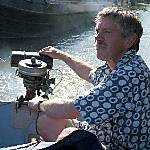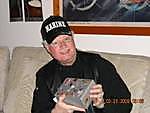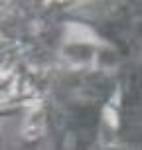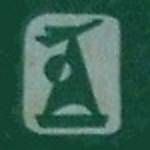You are viewing the archived version of the site.
Go to modelshipwrights.com for the current dynamic site!
Go to modelshipwrights.com for the current dynamic site!
1⁄350USS Lexington (CV2) 1927-1942
23
Comments
Stage 21: weapons
Tip from experience: Build one trial mount of each type first to gain experience and provide a reference. After this set up a production line for each type of mount. For example, prepare all of the kit parts, then all of the PE, then assemble everything. This will save 30 percent of the time it would take if each mount was built as an individual project because of the time saved in swapping tools and techniques. Plus you will greater consistency of treatment.
5-inch mounts
Kit parts: 12
Resin parts: 12
Turned brass parts: 12
PE parts: 36
Scratch parts: 24
Experimental time: 2 hours
Time per mount: approximately 30 minutes
Total time: 6 hours
The kit parts arenít too bad, but I tried adapting LíArsenal 5-inch 38-calibre resin/PE product.
The mount was modified by reducing the length of the loadersí platform at the rear, cutting a central notch into it to create the gap between the left and right platforms, and reducing the height of the pedestal to almost nothing to get the height correct. I also used LíArsenal turned brass barrel, cut at the breech end to 25-calibre length when inserted into a hole drilled in the resin breech assembly. I used the off-cut for a central pivot, inserted in a hole drilled in the base of the mounting. LíArsenal PE railings werenít suitable for the 25-calibre mount, so I used the parts from the GM PE set with the fuse setter removed. After doing all this it was obvious that the trunnions were set too far back for the shorter 25-calibre gun.
The final solution was to use the kit base mounting (suitably tidied up) combined with LíArsenal resin breech and brass barrel, and the GM PE set with fuse setter left in place. An inverted U-shaped piece was cut from LíArsenal PE set to represent one of the two prominent training/elevation instrument drive shaft assemblies running across the top of the gun barrel close to the breech. Thin slices of styrene rod were used to cover the holes on the outside faces of the trunnions.

Above: Weapons trials. Left to right - kit supplied mount, LíArsenal mount, and final solution using a combination of modified kit and LíArsenal components.
Note that the25-calibre mount only had three fuse-setters compared with four on the 38-calibre. In theory, the rounds in the fuse-setters should be removed unless you are modelling the ship at action stations.

Above: Ready, aim, fire...
Tip from experience: When replacing LíArsenal resin barrel with the turned brass item, donít drill a mounting hole in the front of the breach. Instead, lay the drill in the shell-loading tray at the rear of the breach, push it forward and then drill a hole the same diameter as the barrel right though and out of the front of the breach. It will be spot-on every time. Push the barrel into the hole from the rear and adjust its position for length. If youíve selected the right diameter drill the barrel will be a push-fit (because of the taper) and you wonít need any glue to hold it in position or interfere with length adjustment. Gently press the completed barrel and breach assembly into the trunnions until the mounting pips engage with the holes. Adjust for elevation then drop a tiny amount of thin superglue into each trunnion.
1.1-inch mounts
Kit parts: 12
PE parts: 48
Scratch parts: 12
Experimental time: 1.5 hours
Time per mount: approximately 30 minutes
Total time: 6 hours
The kit parts are almost satisfactory, but there are other options. I tried LíArsenal resin/PE product, but this was very disappointing. The base is alright but lacking in detail, and overall not a great improvement on the kit part. The gun barrels on the other hand are dreadful Ė nearly all barrel and no breach. I experimented by replacing them with the kit part and this was a lot better.
Next I tried out the White Ensign Models (WEM) complete PE set for this weapon. This is PE to die for. Assembling it taxed my skills to the limits and really did nearly kill me. I got it all together and trial-mounted it on the hull, but the flatness of the PE barrels was disconcerting. Fixing the middle pair of barrels accurately between the outer barrels was incredibly fiddly and time consuming and I didnít care to have to do this twelve times over. I replaced the barrels with the kit part and the result was ideal Ė incredible detail and not too difficult to assemble.
The kit barrels include erroneous recoil-spring detail around the barrels at the breech end (reminiscent of the 40mm Bofors). But that would have been too difficult to remove, and anyway I could live with this. I used the water-cooling pipes from one of the middle pair of barrels of the WEM PE set. Mount locating spigots made from short styrene rod were glued to the undersides.


Above left: kit supplied mount. Above right: combination of WEM PE and kit barrels.
Tip from experience: Assemble all the PE first and glue the barrel assembly from the kit to the underside of the PE gun sight beam, not to the trunnions (they are wider than the barrel assembly). Donít bend the angles for the pointerís and trainerís seats until after final assembly of the complete mount. The WEM PE is incredibly thin and wonít take much bending and subsequent adjustment before it falls apart.
20mm mounts
Kit parts: 28
PE parts: 112
Scratch parts: 28
Time per mount: approximately 10 minutes
Total time: 4.75 hours
Twenty eight mounts are required, although the kit specifies 27. Fortunately 30 are provided on the sprues. GMM provides an excess of parts which is also fortunate, since I lost quite a few pieces when they pinged out of the tweezers, mostly never to be found again. The pedestals are 1mm to high. That might not sound much, but it translates into about 12-inches, which is the difference between a gunnerís waist and chest height, or his shoulders and the top of his head. Given that training and elevation of the gun was controlled with a shoulder harness, this is important. This was dealt with by removing 1mm from the base, drilling a small hole, and inserting and gluing a locating spigot of thin styrene rod. Apart from this, construction was straightforward and involved fitting the GMM PE parts to the basic kit item.
Variation in location compared with the kit instructions are: two at the rear corners of the flag platform (not to be confused with the signals platform) replacing the two searchlights; two on the forward corners of the of the pilot house platform; one less required at the forward end of the lower, outboard stack gallery (replaced by a 0.5-inch mount).
Tip from experience: Donít bend the gunnerís shoulder braces before you glue them on. Instead, leave them flat, glue them on, and bend them afterwards. Donít bend the gun sight ring before you glue this in position - do it afterwards.
0.5-inch mounts
Kit parts: 22
PE parts: 22
Time per mount: approximately 5 minutes
Total time: 1.75 hours
Twenty two guns are required. As with the 20mm mounts, the pedestals are 1mm too high. The solution was simpler, just cutting this amount off the base, drilling out the location holes to suit the pedestal diameter, and gluing in at the correct height. The GMM PE set provides the combined gun sight and training/elevating bar.
Variation in location compared with the kit instructions are: none on the fore and aft 5-inch control tops; two at the forward end of the lower gun gallery on the outboard side of the stack.
Tip from experience: Donít bend the gun sight up before you glue the PE on Ė do it afterwards.
Painting and mounting
Time: 6 hours
All 61 automatic AA weapons were pressed into pre-drilled holes in lengths of bass wood left over from the Nautilus deck. This alone took 30-minutes. After spraying up with WEM Colourcoat 5-S Sea Blue, each individual gun was removed with tweezers, inspected, and any unsatisfactory paint coverage corrected with the airbrush. I didnít overdo this because variations in colour and depth add to the three-dimensional quality. The 5-inch mounts were airbrushed individually.
Comments
Hi Joseph,
Yeah, it was a lot of research. I was DETERMINED to make it abolutely as accurate as possible. What I don't understand is how Trumpeter got so much of it grotesquely wrong. Anyway, thanks for your comments. I sure hope you find my feature useful - from what I've seen the 1:700 from Trumpeter is just a scaled down version of the 1:350 kit, including everything that's wrong with the big one!
JUL 08, 2008 - 05:36 AM
Hi Rui
Well, well, well. I used to be a graphic designer myself as well. And a copywriter. Hence what I hope is a deal of professionalism in my SBS guide.
The whole project spanned two years. I didn't dare start another model in all that time, knowing it would simply delay completion and possibly I would lose my motivation. Sometimes it was very hard to keep going - the progress when doing the armament and the air group seemed so slow. I really had to force myself to keep going.
Thanks for the advice on using Clearcoat on the decals. Actually, that is what I did use, in order to soften the decals so they would lay close on the curved fuselage sides, to get them to stick, and to try and dull them down. All the planes were matt varnished as well, but that still didn't kill the decal edge reflection.
You can see some of my 1:700 stuff at: LINK If you select my name from the top of the menu on the left you can see all my galleries.
By the way, the 1:700 Trumpeter Lexington looks like just a scaled-down version of the 1:350 version, including everything that is wrong and inaccurate. So please, please, do use all the research I did to get it right. I look forward to seeing the result!
Regards, Chris
JUL 08, 2008 - 05:48 AM
Jim
Your comments an honour indeed. I have followed your work over the years at Modelwarships.com and you really are the best. Counting the hours is actually a way of giving myelf a sanity check! Which is why to some extent the whole project took me two years from start to finish.
Regards, Chris
JUL 08, 2008 - 05:53 AM
Thanks for taking time to answer to my questions!
I have the 1/700 Trumpeter model, for Coral Sea fit, so I guess you have done all the research for me - but still, I have to get the work myself!
Not for now, but for a "near" future (I am currently working on three projects, one a full scratch all in 1/700).
Thanks for the link, and since my memory is better for graphics, than for names, I can say that I had already seen your Sara / Lex duo in MW.
Please keep up - keep your ship models afloat!
Rui
JUL 08, 2008 - 05:57 AM
Are you sure that thing is a model. It looks so real. In some of those photos it looks too real. Nice job. Amazinglly nice job. Great tribute to those who sailed, fought and died on board the original Lady Lex carrier. Nice work.
JUL 11, 2008 - 08:46 AM
Hi Chris,
Sorry no plans on any new 1/350 items.
You could use my YC-728 or 829 for an open ammunition lighter. I have some photos of their use as such.
JUL 15, 2008 - 07:06 AM
Hello Chris:
I just finished reading your build log. Outstanding work and very well written. I have this kit, not sure I want to tackle all the inaccuracies vice just building an OOB kit, but, your work is inspirational and you presented a lot of neat ideas to enhance the kit. I will be referencing your build log when I tackle mine. Thanks for posting and sharing.
FEB 10, 2015 - 08:49 AM
Mark, I doubt Chris will respond as this is a 7 year old tread and Chris last signed in 7 years ago.
FEB 10, 2015 - 09:13 AM
wow, awesome model building.
well worth resurrecting the thread and feature.
FEB 11, 2015 - 09:17 AM
Copyright ©2021 by Chris Smithers. _OPINIONS Model Shipwrights, KitMaker Network, or Silver Star Enterrpises. Images also by copyright holder unless otherwise noted. Opinions expressed are those of the author(s) and not necessarily those of Model Shipwrights. All rights reserved. Originally published on: 2008-07-04 00:00:00. Unique Reads: 23646














